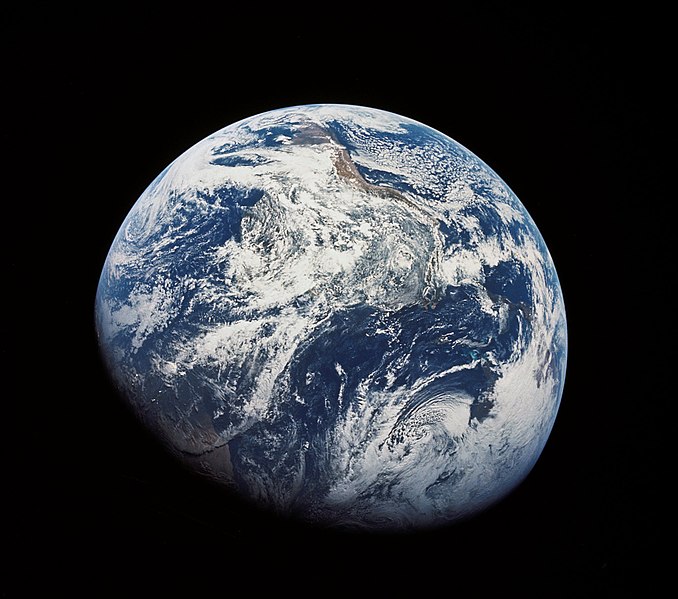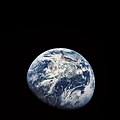File:As08-16-2593.jpg

Size of this preview: 678 × 599 pixels. Other resolutions: 272 × 240 pixels | 543 × 480 pixels | 869 × 768 pixels | 1,159 × 1,024 pixels | 2,015 × 1,781 pixels.
ʻAsi ʻa e faitā auiiki ((2,015 × 1,781 meʻaʻata, ko e faile hono lahi: 621 KB, faʻahinga MIME: image/jpeg))
Hisitōlia ʻo e faile
Lomiʻi ha ʻaho/taimi ki he vakai ʻo e faile naʻe ʻi ai he taimi ko iá.
| ʻAho/Taimi | ʻAtasiʻi | Hono lahi | ʻEtita | Fakamatala | |
|---|---|---|---|---|---|
| taka | 17:19, 18 ʻEpeleli 2012 |  | 2,015 × 1,781 (621 KB) | Soerfm | Crop |
| 18:09, 5 Sānuali 2008 |  | 2,458 × 2,458 (411 KB) | Papa November | Uploaded higher res version. Source is on description page | |
| 03:50, 6 ʻEpeleli 2005 |  | 900 × 900 (96 KB) | Evil Monkey | ===Description=== The first image taken by humans of the whole Earth. Photographed by the crew of Apollo 8 (probably by Bill Anders) the photo shows the Earth at a distance of about 30,000 km. South is at the top |
Faitā fehokotaki
ʻOku ʻikai ha ngaahi peesi fehokotaki ki he faitā ni.
Global file usage
The following other wikis use this file:
- Usage on ar.wikipedia.org
- Usage on bg.wikipedia.org
- Usage on bn.wikipedia.org
- Usage on bn.wikibooks.org
- Usage on bn.wikiquote.org
- Usage on br.wikipedia.org
- Usage on br.wiktionary.org
- Usage on cy.wikiquote.org
- Usage on da.wikipedia.org
- Usage on de.wikipedia.org
- Usage on de.wikiversity.org
- Usage on en.wikipedia.org
- 1960s
- Outer space
- User:Ravenswing
- User:Jklin
- User:Big Blue Marble
- User:Paleorthodox
- Portal:Outer space
- User:KrakatoaKatie/Calendar
- User:KrakatoaKatie/CalendarApril
- User:Grimhelm
- User:IjonTichyIjonTichy
- User:UBX/Christ the Logos
- User:Xwayj/sandbox
- User:-revi
- User:Luxure/sandbox
- User:Stan traynor
- User:MarsToutatis
- User talk:Coffeeandcrumbs
- User:ZaperaWiki44
- User:-revi/IRL
- User:Swaggalicious
- User:ItzAviqn
- User:LittleJellies/sandbox
- Usage on en.wikibooks.org
View more global usage of this file.




